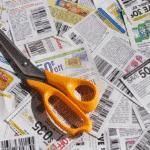When is a $1.50 coupon better than a $3.00 coupon? When there’s a bit of psychological trickery involved, in convincing you that you’re getting a better deal.
You’ve likely come across “shareable” coupons online. They have a base value when you print them, but if you agree to share them with friends or on social media, they’re worth more.
But how much more? How much will it take, for you to tell everyone you know that you “like” that coupon for Preparation H?
Okay, so maybe your affinity for some coupons is best kept to yourself. But overall, a new analysis says when it comes to incentivizing you to share a coupon – it may not take much.
That’s according to RevTrax, the printable coupon provider that helps brands promote this very type of coupon. In a new white paper, “Taking the Mystery Out of Measuring Social Promotion Effectiveness,” the coupon company reveals the results of their findings about what brands can do to get you to share their coupons.
And one of their findings is that promising a significantly higher value in exchange for a share, does not have the greatest impact. Offering a lower value is surprisingly more effective – not to mention cost-effective, for the coupon issuer.
Say the base value of a coupon is $1.00. If you share it, you might get $2.00 or $3.00 off. “The thinking goes that a sharing version should be… significantly higher than standard value to reward and encourage a share,” RevTrax explains.
But that’s not necessarily so.
Instead, imagine the same coupon comes with a base value of just 35 cents. If the sharing value is $1.50, RevTrax says its research shows that you’re much more likely to share it – even though the ultimate value is only half as much as in the first example.
“It wasn’t the size of the incentive that drove performance,” RevTrax found. “It was the contrast between the incentive offer value when shared, versus the offer value if not shared.” In other words, boosting a coupon’s value threefold, from $1 to $3, is less effective than boosting it fourfold, from 35 cents to $1.50.
The ultimate savings are not as impressive, but it’s the perception of getting a great deal that’s more likely to prompt you to share an offer, than actually getting a great deal.
RevTrax came to this conclusion after studying hundreds of social promotions to determine which ones were shared at the highest rate. So if you’re thinking you won’t fall for this trick – you may already have.
“Overall, we found a contrast, or differential of 3X to 4X between non-share and sharing-incentive versions of an offer was optimal in driving overall social sharing performance,” RevTrax concluded.
So if you’ve ever complained that coupon values aren’t as good as they used to be – in a strange way, it seems that we might actually prefer it that way.
And brands that are getting us to share, print and use their coupons to buy their products – and saving money in the process – certainly aren’t complaining.

















I would have preferred you look at more than just the end value of the coupon. The value of the coupon verses the price of the usual product probably had more to do with sharing than the end value of the coupon.